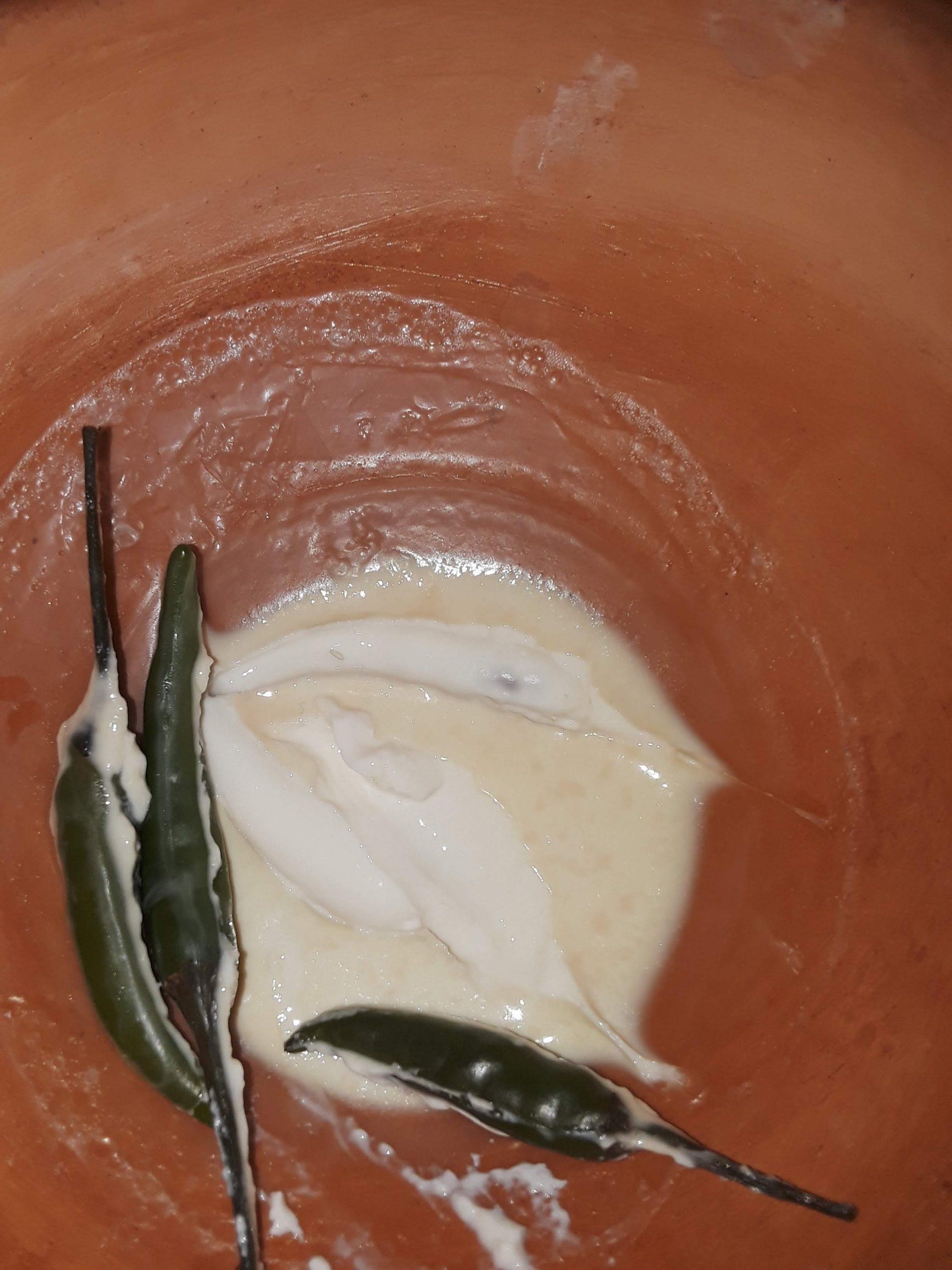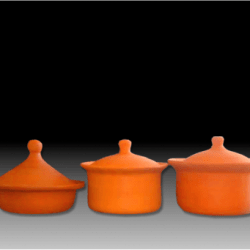Make Yogurt at Home: Nutritious & Non-Toxic
Your best yogurt can be made at home, you know why? Because you can make it in the most healthy and non-toxic way! The commercial prepared store bought version of yogurt pales in comparison to the taste, thickness and flavor offered by homemade yogurt in this method that we are about to teach you! And of course this is achieved without the use of artificial thickeners, pectin, and whatnot. Also, you can forget about getting your food close to plastic (most store bought yogurt are prepared and come in toxic plastic containers). So, without further ado, let us dive into the best way of making yogurt that has been practiced from time immemorial.
How to Make Yogurt at Home: A Quick and Easy Recipe, with Tips on Making it Thick and Delicious
This is a different & easy, time-honored, and people-beloved method of making thick, creamy & healthy yogurt each time. Our ancestors relied on clay pots for making yogurt years ago, and it is the best way to make yogurt even today. There is no need for electronic appliances or artificial thickeners/sweeteners – all you need is 1/2 a gallon or less of raw or pasteurized milk, some leftover yogurt as a starter (see notes), and an MEC 100% non-toxic pot. Then follow these steps:
(3 steps, 7-10 minutes hands-on time)
Ingredients: Raw or pasteurized milk & live yogurt culture (2-3 Tbsp. of yogurt from the previous batch per every 1/2 gallon of milk)
Step 1:
Heat ½ gallon of milk to just before boiling point (till small bubbles form on the surface). Turn stove off, and open lid and let it cool down for 30 mins or so, till you can put your little finger and hold it there for 5 secs. Now the milk is ready for the culture.

Step 2:
Add yogurt culture, stir thoroughly.
Step 3:
Set in the oven with the lid on and oven light on. Let it incubate for 6-8 hours and the yogurt is ready!

Notes:
- While Set of 2 | Yogurt Maker is our best seller for making yogurt and each pot can make a little over 1/2 gallon, the other pots can also be used for making bigger batches. The MEC large pot can make 1 gallon and the x-large pot can make 1.5 gallons.
- Use the pot with the diffuser, especially when cooking on any stove that runs on electricity—glass, ceramic, or coil cook-tops.
- Yogurt from whole milk is best because it is less manipulated and has most of the original nutrients. However, you can also use low-fat if you prefer. The fat in whole milk is essential for brain cell growth and nourishment for people of all ages.
- In a few uses, the milk will take less time to get hot than in a new pot.
How do you Make Homemade Yogurt Culture From Scratch?
Making your own yogurt culture is very similar to the process of making yogurt. You can use either 3 whole cardamom pods or 2 green chilis with stem included (fresh, frozen will not work) per every 3/4 to 1 cup of milk for your culture. The stem of green chili peppers and whole cardamom pods each contain the prebiotics needed to form yogurt culture.
- In the MEC bowl or MEC small pot, heat 1 cups milk until you can see bubbles on the surface.
- Let the milk cool down to a culture-fostering temperature – you can check this by seeing if you can hold your pinky in the milk for 5 seconds (if you cannot safely hold your pinky in the milk for 5 seconds, keep lid open and let cool for a little bit longer)
- Add your chilis or cardamom pods when the milk temperature is right.
- Cover the bowl and let it ferment. This may take up to 2-3 days (repending on the region and weather, the cooler the outside temprature the longer it takes, and upto 72 hours). After the first 24 hours, periodically check the culture to see if it has thickened into yogurt.
- When the milk has thickend into culture/yogurt, discard the cardamom pods or chilis.
- From there, you can make your first batch of yogurt with this newly created culture; however, the first batch of yogurt may be sour and/or spicy because of the chilis/cardamom. Because of this, we recommend making a small quantity for your first batch. You could do the same 1 cup of milk quantity.
- Using 2-3 tbsp. of yogurt from this newly created batch make your next batch of yogurt. This batch will be your first actual yogurt, becuase it will not have the taste from the cardamom or chili used in the beginning.
- NOTE: if you’ve tried cardamom and it didn’t work, please use chili with stem as shown in the picture below — any kind/variety of chili can be used.



Why is Making Yogurt At Home Is The Best Option?
A lot of the good stuff in yogurt is processed out in the store bought yogurt. It is usually loaded with unhealthy sugars and artificial sweeteners. A number of other additives and artificial thickeners (pectin, gelatin, vegetable shortening, etc.) make it unhealthy. Also, yogurt is heat processed to increase shelf life, which can destroy live bacterial cultures. As a result, store-bought yogurt is unfortunately anything but healthy.
There are many different healthy homemade flavors you can add to your yogurt, here are some of our favorites:
- Yogurt with brown sugar, a pinch of salt, and chopped almonds and walnuts
- Yogurt with pureed fruits—try blueberries or strawberries with nuts of your choice
- Yogurt with granola is also another healthy choice for breakfast
If you like it with some heat: go for yogurt with chopped cilantro, thinly sliced onions and some chopped green chilies with a pinch of sea salt. This recipe for yogurt turns out best if you add about 3-4 Tbsp. of water to every cup of yogurt. You do not have to use exact measurements, however. Just make sure the yogurt is not too thick! Dilute it to a thick but pourable (flowing) consistency.
The internet is a good source for things you can make with your yogurt, but remember to use recipes that do not call for the use of any artificial or unhealthy ingredients or chemicals!

The Benefits Of Healthy Homemade Yogurt
Your yogurt is a good source of many minerals needed to stay healthy. It is high in zinc. Zinc is important for cell growth and repair. One eight-oz. serving has around 42 percent of your daily calcium, a crucial aspect of healthy bones.
Also, yogurt has a high amount of phosphorus. Phosphorus works with calcium to help with bone strength and growth. Natural yogurt also has 15 percent of your daily value of potassium that helps to keep your muscles working properly…
Your homemade yogurt is also a great source of multiple B vitamins like Riboflavin or Vitamin B2, B8, B1, and B5. It is also a rich source of Thiamin and Foliate.

How Does MEC’s Homemade Yogurt Compare to Greek Yogurt and Others?
Compared to regular plain yogurt made without thickeners or additives, MEC’s homemade yogurt is very different. It is clearly much thicker and creamier and delicious. When compared to Greek-style yogurt, MEC’s is thicker and healthier, because Greek yogurt is thickened by straining the yogurt several times and discarding the essential liquid probiotics.
With MEC’s homemade yogurt, the liquid and the semi-solid probiotics stay intact while the pot slowly and naturally lets just the water evaporate.
On a side note: Did you know the Greeks actually made their yogurt in clay pots, and that’s why it turned out thick? People tried to imitate that and came up with the process of “straining”.
Besides being thicker and creamier, your yogurt made in MEC pots is without a doubt healthier because the food has no interaction with metals or chemicals. It also does not experience nutritional loss while cooking or heating.
Making Yogurt with Non-Dairy Milk
One may use non-dairy milk to make homemade yogurt, as well. Using different bacterial cultures for non-dairy milk is not required, as long as you add some natural sugar to the mix when creating your culture and making your yogurt.
Otherwise, for plant-based milks like soy milk, coconut milk, or almond milk; you can use species such as Lactobacillus casei, Lactobacillus rhamnosus, and Bifidobacterium bifidum to ferment.
People Also Ask:
What are the main ingredients of yogurt?
The main ingredients of yogurt are milk and starter culture. The milk can be raw milk or pasteurized milk, and dairy or plant-based.
Is making your own yogurt worth it?
Definitely! The heavy processing of store bought yogurt combined with unhealthy additives like preservatives, thickeners, artificial flavors, and sweeteners render it unhealthy, as almost all the good stuff is processed out.
Making your own yogurt avoids all that, and it is way more nutritious because all the probiotics remain intact.
Does the bacterial colony weaken over time?
With MEC, it does not! Many believe that over time, the colony weakens – the opposite is true, actually. While making yogurt in MEC, as long as the culture is stored in an adequate environment, the culture only gets stronger with time!






3 Comments
Chai Sia Ngu said:
May I know what lid you use to cover your pot since MEC pot does not come with a lid? Can I just cover the pot with a plastic wrap? ‘
Just ordered my first Miriam MEC fermenting pot after seeing so many good reviews about how great it is as a yogurt making pot.
Thanks
Jane
Lynne S Ploetz said:
I want to add vanilla from a vanilla bean to my yogurt. When in the process do I do this. And making my own culture with 3 fresh cardamon pods worked out very well, Now my first batch of yogurt is in the oven with the oven light on in 6 hours I will check it and see if it is yogurt yet. The culture took two days to become starter! I bought your large MEC pot and am using that to make my yogurt.
Mary Barker said:
How do you store left over yogurt and maintain probiotics
Write a Comment